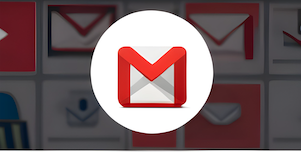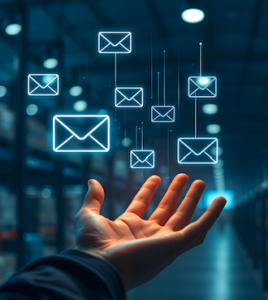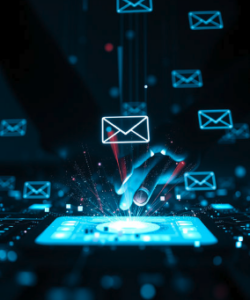In December 2024, Gmail, the widely used email platform with over 2.5 billion users globally, issued an urgent security warning. This follows a sharp increase in sophisticated phishing attacks that have targeted millions of Gmail users, causing widespread concern. Phishing, a method by which cybercriminals impersonate legitimate sources to trick individuals into revealing sensitive information such as passwords or bank details, has been on the rise for several years. However, experts have recently predicted that a second, even more dangerous wave of these attacks is on the horizon.
The reason for the increasing severity of these threats is due to the constant evolution of phishing techniques. Hackers have begun leveraging artificial intelligence (AI) and machine learning to create more convincing and targeted attacks. These attacks not only put personal information at risk but also threaten corporate data, financial security, and user privacy. This article delves into the nature of these attacks, how Gmail users are being targeted, and the security measures users can take to safeguard their accounts.
The primary aim of this article is to provide users with practical steps to protect their Gmail accounts from these advanced threats and ensure they are prepared for the second wave of phishing attacks.
Background: The First Wave of Gmail Phishing Attacks
The first wave of Gmail phishing attacks began earlier in 2024 and quickly garnered attention for its scale and sophistication. These attacks targeted users through deceptive emails that appeared to come from Google’s official support team. These emails were designed to convince users to click on links or verify their account details due to supposed suspicious activity in their Gmail accounts. However, these links led to fraudulent login pages that closely resembled Gmail’s actual sign-in page.
Once unsuspecting users entered their login credentials, attackers gained access to their Gmail accounts. From there, they could send out additional phishing emails to the compromised user’s contacts, further amplifying the scale of the attack. These emails often contained malicious links or requests for sensitive information, creating a snowball effect that spread the attack across multiple accounts.
In addition to gaining access to login credentials, attackers were also able to steal sensitive personal information stored in Gmail accounts, including email conversations, contact details, and even financial data. This data could then be used for further malicious activities, such as identity theft or fraud.
One of the most concerning aspects of this first wave was the use of Google’s branding. Because the emails appeared to come from Gmail itself, users were far more likely to trust them, making it harder for individuals to identify the phishing attempt. For many, the idea that Google would be sending them an official email asking for personal information seemed reasonable, thus increasing the likelihood of a successful attack.
Though Google responded with stronger security measures, including improved spam filters and phishing detection, the damage was widespread. Many users reported unauthorized access to personal accounts, financial transactions, and work-related communications. The scale and sophistication of the first wave made it clear that Gmail users needed to be more vigilant than ever.
However, cybersecurity experts are warning that the worst may still be ahead. The second wave of attacks is expected to be even more advanced, leveraging new technologies and smarter techniques to bypass traditional defenses.
The Second Wave: What Experts Predict
The first wave of Gmail phishing attacks was alarming, but the second wave is expected to be far more dangerous. Experts predict that this new wave of attacks will be powered by advanced technologies, including artificial intelligence (AI) and machine learning. These technologies will make phishing emails more convincing, targeted, and harder to detect.
AI-Powered Phishing Emails
One of the key predictions for the second wave of attacks is the rise of AI-driven phishing campaigns. Cybercriminals are increasingly using machine learning models to mimic the writing style and tone of emails from legitimate organizations or even individual contacts. By analyzing communication patterns, AI can generate emails that closely resemble those sent by trusted colleagues, friends, or companies, making them far more difficult to distinguish from genuine messages.
For instance, AI algorithms can analyze the specific language and style used in an individual’s previous emails to create personalized phishing messages. This could lead to an email that not only looks like it comes from someone you know but also uses language and context that are relevant to your daily activities. This level of personalization makes it more likely that the recipient will trust the email and engage with the links or attachments contained within it.
Targeted Social Engineering Attacks
Another key aspect of the second wave will be the use of more targeted social engineering tactics. Instead of sending phishing emails to a wide audience, attackers may focus on specific individuals or groups of high-value targets, such as executives, business owners, or individuals with access to sensitive information. These targeted attacks are often referred to as spear-phishing, where the attacker customizes the email to make it seem like a legitimate request from someone the victim knows and trusts.
In spear-phishing attacks, attackers may impersonate colleagues or even company executives, requesting sensitive information or access to secure data. Since these emails are crafted to appear highly legitimate and personal, recipients are far more likely to fall for the scam, even if they are otherwise cautious about phishing attempts.
Advanced Bypassing of Multi-Factor Authentication (MFA)
While multi-factor authentication (MFA) is widely considered one of the most effective defenses against phishing, experts believe attackers may soon find ways to bypass this layer of security. MFA typically requires users to provide something they know (a password) and something they have (a verification code sent to a phone or an authentication app). While MFA has significantly reduced the success of phishing attacks, cybercriminals are developing methods to bypass MFA by exploiting weaknesses in the authentication process.
In some cases, attackers may use SIM swapping or man-in-the-middle attacks to intercept MFA codes and gain access to user accounts. These techniques have already been used to bypass MFA in other online platforms, and experts believe Gmail could be a potential target for such attacks in the second wave of phishing campaigns.
Google’s Response: Strengthening Gmail’s Defenses
In response to the growing threat of phishing, Google has rolled out several security updates designed to protect users from these advanced attacks. These measures are aimed at detecting phishing attempts, blocking malicious emails, and providing users with the tools they need to safeguard their accounts.
Enhanced Phishing Detection
Google has implemented more advanced phishing detection algorithms powered by AI and machine learning. These systems analyze email content in real time, identifying suspicious characteristics like unfamiliar sender addresses, misleading links, and strange attachments. When a phishing attempt is detected, Gmail’s system will flag the email as suspicious, either moving it to the spam folder or issuing a warning to the user. This increased level of vigilance helps users avoid phishing attempts before they can take action.
Security Alerts for Users
One of the most important changes is the introduction of real-time security alerts for Gmail users. When Google’s AI detects a potential phishing attempt, users receive a pop-up warning on their screen. This alert will warn users not to click on any links or attachments and will provide guidance on how to recognize suspicious emails. The alerts are designed to help users avoid falling victim to phishing scams by increasing their awareness of potential threats.
Password Checkup Tool
To further enhance security, Google has introduced the Password Checkup Tool. This feature scans users’ saved passwords to ensure they have not been compromised in previous data breaches. If any of your passwords have been involved in a breach, Gmail will alert you and recommend that you change it immediately. This is especially important as cybercriminals often target accounts with weak or reused passwords in phishing campaigns.
Advocating for Multi-Factor Authentication (MFA)
While Google has improved Gmail’s built-in security measures, it continues to advocate for wider adoption of multi-factor authentication (MFA). Google has made it easy for users to enable MFA by offering various options, including Google Authenticator and Google Prompt. With MFA enabled, even if an attacker manages to steal your password, they will still need a secondary factor, such as your phone, to gain access to your account.
Enhanced Business Email Compromise (BEC) Protections
Google has also focused on improving protections for businesses, which are particularly vulnerable to phishing attacks. The company has introduced new filters and detection tools aimed at identifying business email compromise (BEC) scams. These types of attacks often involve cybercriminals impersonating company executives or business partners to request fraudulent transactions or sensitive information.
How to Protect Your Gmail Account: Best Practices
While Google has implemented several robust security measures, users must also take proactive steps to protect their Gmail accounts. Here are some essential security practices that can help safeguard your account from phishing attacks:
1. Enable Multi-Factor Authentication (MFA)
Enabling MFA adds an extra layer of protection to your Gmail account. By requiring a secondary authentication step (such as a code sent to your phone), MFA makes it significantly more difficult for attackers to access your account, even if they know your password.
2. Use Strong, Unique Passwords
Make sure your Gmail password is strong and unique. Avoid using easily guessable information, like names or birthdates. Consider using a password manager to generate and store complex passwords securely.
3. Be Wary of Suspicious Emails
Always double-check emails that seem unusual, even if they appear to come from Google or someone you trust. Do not click on links or download attachments from unsolicited emails. Hover over links to see their true destination before clicking.
4. Regularly Review Your Account Activity
Periodically check your Gmail account for unusual activity. In the “Last account activity” section, you can view recent logins, including the location and device used. If you spot anything suspicious, immediately change your password and enable MFA.
5. Educate Yourself on Phishing Techniques
Stay informed about the latest phishing tactics. Phishing emails often use social engineering methods to trick users, such as pretending to be urgent requests for account verification or financial assistance.
6. Report Suspicious Emails
If you receive a suspicious email, report it to Google. Gmail allows users to mark phishing emails, which helps improve the system’s ability to detect and block similar attacks in the future.
7. Avoid Public Wi-Fi for Sensitive Transactions
If you need to access your Gmail account while on the go, avoid using public Wi-Fi networks, as they are often unsecured. Use a Virtual Private Network (VPN) to encrypt your internet connection if you must access Gmail from public or shared networks.
Stay Vigilant and Prepare for the Worst
Phishing attacks on Gmail are expected to become even more sophisticated and widespread in the coming months. As the second wave of attacks looms, users must take proactive steps to secure their accounts. By enabling MFA, using strong passwords, staying vigilant against phishing emails, and staying informed about the latest security updates from Google, Gmail users can significantly reduce the risk of falling victim to these increasingly complex attacks.
Feel free to check out our other website at :aibrainpowered.com














